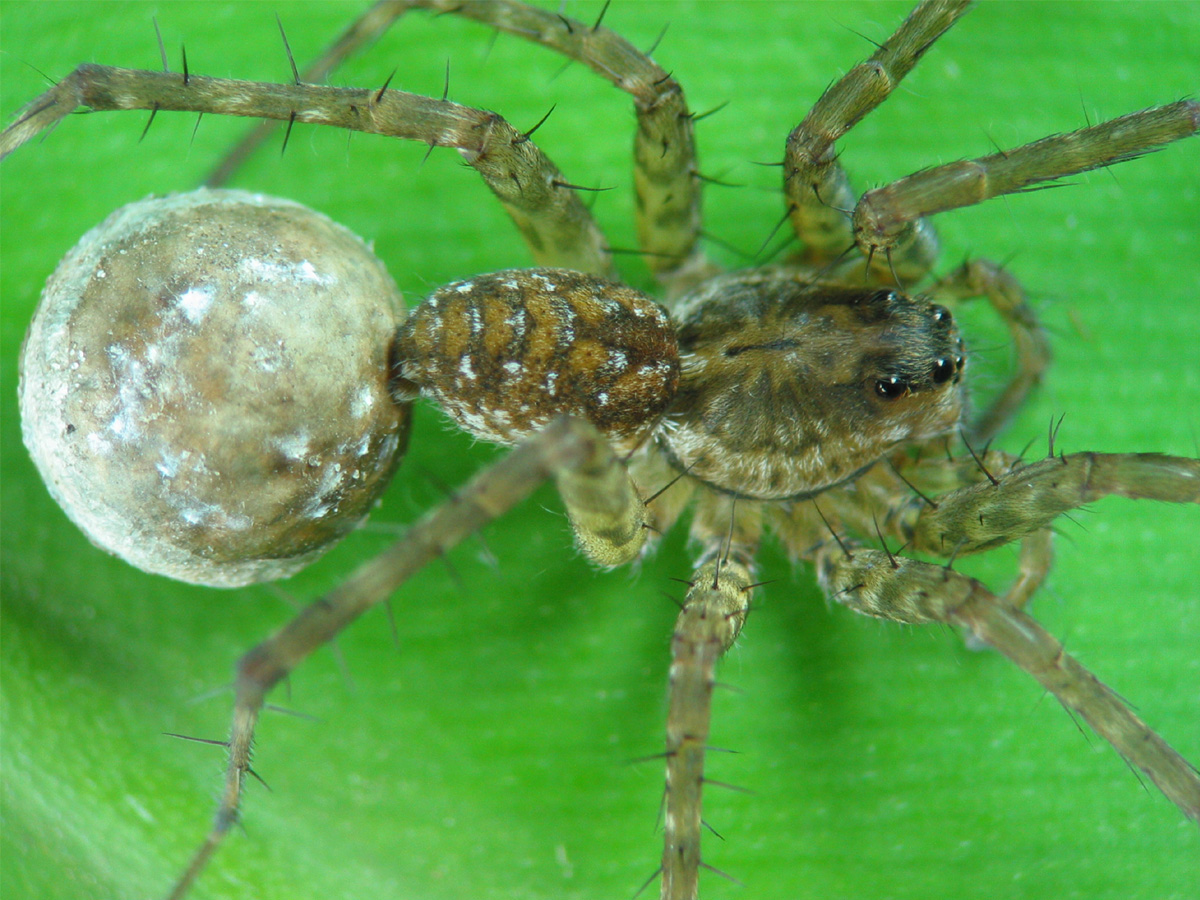Table for one, please
If you ponder the question of why female spiders frequently eat their mates (frequently, not always) you sometimes arrive at the question, “Why not?” They’re usually solitary creatures, those spiders, with nothing to say to each other, no shared hobbies or interests, and they refuse to stay together for the children. In fact, sometimes they eat the children, but that’s another story.
A spider man that tumbles into a female spider’s embrace is likely to be smaller than she (easier to overpower), eager to get perilously close to her fangs, and a nice packet of nutrition for the future mother to be. All of which makes great sense … for her. But is a fella more than just a snack?
It turns out to be rather more mysterious. And I like mysterious spiders. A new study of wolf spiders in China (Pardosa pseudoannulata) tried to tease out the matter of who eats whom, how often, and under what circumstances. Was she just hungry? Was the luckless suitor too inexperienced? The scientists paired off dozens of spiders, both virgin and experienced, and tabulated a number of different ways the blind dates turned out.
Ten percent of the virgin females ate their dates without even mating. Twenty-eight percent ate them right after mating. Both hungry gals (as opposed to recently fed) and those who had previously mated or laid egg sacs were more aggressive than the debutantes. The bigger the size differential (dimorphism) the more likely the male would become a meal. Nobody got eaten during the act itself. All very gothic and kind of comprehensible.
At this point, do the numbers … most of the males therefore got away. That’s interesting in its own right. More interesting is what follows.
There turned out to be a clear result from all these enchanted encounters: the females that had noshed on a male after mating had the same number of offspring as those who hadn’t (in other words, fecundity was unaffected) but those offspring survived better. They were vigorous spiderlings who looked to have a better shot at making it to adulthood. That rings the Darwinian gong in the clearest possible way: cannibalizing a mate gives your progeny, your genes, a leg up—eight legs up—in the grand contest with no finish line.
I have to chide the Economist, which otherwise I honor and adore, for reporting on this phenomenon with a lack of journalistic objectivity. It’s so hard for the Brits to think straight about spiders. The male “thus probably … wants to be eaten, for the good of his posterity,” writes Reggie or Nigel. And the salmon swims upstream to spawn because he wants to star in a Discovery Channel documentary, right?
Of course not. Spiders and salmon don’t want anything of the kind. Nor do they set up IRAs and college accounts for their offspring. If daddy long-legs’ death contributes to the hardiness of baby long-legs, than it’s going to happen. You don’t need God or Dr. Spock to coax it along. We packets of DNA do things like that because our ancestors, having done them, thrust their genes into the future, our present. And we will continue doing the things that work, because they have worked.
A remaining question, in the Mystery of the Dined-On Daddy, is what exactly his little carcass does for his mate and her egg sac. Nobody knows what the secret ingredient is, if there is one. Maybe the least romantic females were already equipped to make better offspring, so the male just managed to get a bad spin on the Wheel of Life even as his genes hit the jackpot.
At any rate, dude probably should have learned to dance.
